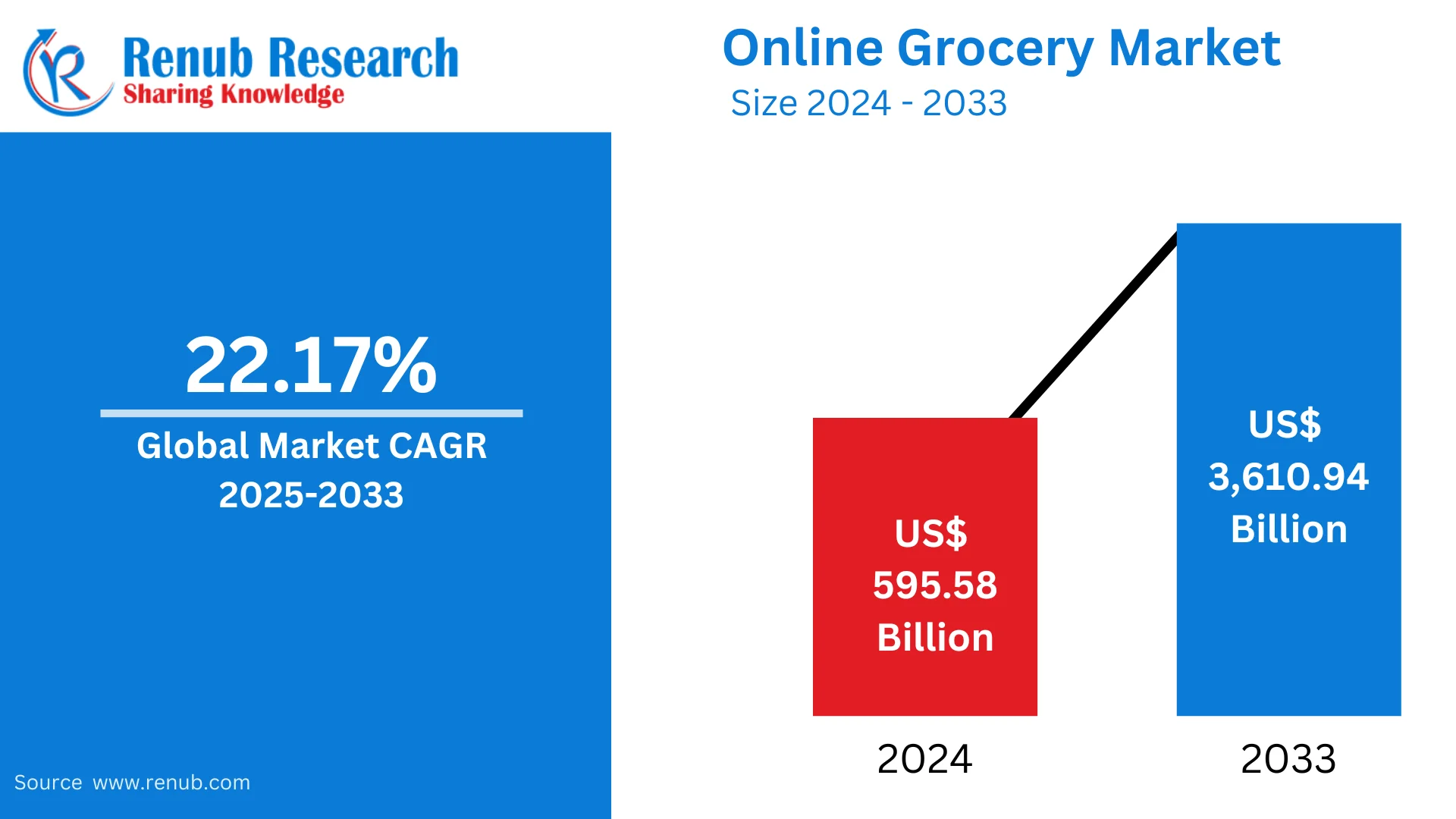Strong Demand for Gluten-Free, Plant-Based Ingredients Boosts Market Growth
According to the latest report by Renub Research, the Global Potato Starch Market is expected to grow from US$ 4.71 billion in 2024 to US$ 6.99 billion by 2033, expanding at a CAGR of 4.47% from 2025 to 2033. The surge in demand is attributed to the rising popularity of gluten-free and clean-label products, the increasing adoption of vegan and vegetarian diets, rapid growth in the food processing sector, and broader industrial applications for potato starch.
Request sample Report:https://www.renub.com/request-sample-page.php?gturl=potato-starch-market-p.php
Potato starch—a natural carbohydrate extracted from potatoes—has established itself as a versatile ingredient in food, pharmaceuticals, textiles, paper manufacturing, and bioplastics. Its neutral taste, high binding capacity, and thickening properties make it a preferred choice for food manufacturers and industrial users alike.
Gluten-Free and Clean-Label Demand Driving Sales
The global shift toward clean-label products—those made with simple, recognizable ingredients—has significantly boosted potato starch demand. As consumers increasingly avoid artificial additives, gluten, and genetically modified organisms (GMOs), potato starch has emerged as a natural alternative for thickening, stabilizing, and binding in various recipes.
In the gluten-free market, potato starch plays a vital role in baking and processed food production. It provides texture and moisture retention for bread, cakes, and pastries, making it indispensable in meeting the needs of consumers with celiac disease or gluten intolerance.
Vegan and Vegetarian Diets Favor Plant-Based Ingredients
The rise of plant-based eating trends is another major contributor to market growth. Vegan and vegetarian consumers prefer potato starch for its plant origin, versatility, and compatibility with dairy-free, egg-free, and meat-free recipes.
Food manufacturers are increasingly formulating vegan cheese, plant-based meats, and dairy alternatives using potato starch to replicate the texture and consistency of animal-based products, further expanding its market footprint.
Expansion of the Food Processing Industry
The food processing sector has experienced robust growth worldwide, particularly in convenience foods such as instant soups, ready-to-eat meals, and snack products. Potato starch is a critical ingredient in these segments due to its ability to improve shelf life, enhance mouthfeel, and maintain product stability during storage and transport.
As consumer lifestyles become busier, the demand for convenient, easy-to-prepare meals will continue to drive potato starch utilization in processed food manufacturing.
Versatile Applications Beyond Food
While food and beverages dominate potato starch consumption, its applications in non-food sectors are also growing:
· Pharmaceuticals: Used as a disintegrant in tablet formulations.
· Textiles: Improves fabric finish and enhances weaving efficiency.
· Paper Industry: Functions as a surface sizing agent for improved printability.
· Bioplastics: Acts as a biodegradable alternative to petroleum-based plastics.
The eco-friendly nature of potato starch aligns with sustainability goals in various industries, further fueling demand.
Innovation in Potato Starch Products
Ongoing research and development are leading to innovative potato starch variants with enhanced functionality. Manufacturers are focusing on:
· Modified potato starch for better performance in high-temperature cooking.
· Organic-certified potato starch to cater to the organic food market.
· Blended starch solutions combining potato starch with other plant-based starches for tailored functionality.
These innovations are enabling potato starch to penetrate premium food segments and specialized industrial applications.
Key Market Drivers
1. Health and Wellness Trends
Consumers are prioritizing healthy eating, clean-label products, and allergen-free diets, driving the adoption of potato starch.
2. Rising Vegan and Vegetarian Populations
Plant-based diets are fueling demand for animal-free ingredients with multifunctional properties.
3. Growing Sustainability Focus
Potato starch’s biodegradable properties align with environmental goals and regulations.
4. Industrial Diversification
Expanding applications in pharmaceuticals, paper, textiles, and bioplastics are boosting consumption.
5. Food Innovation and R&D
Continuous innovation in starch processing and formulation is creating high-value market opportunities.
Challenges in the Potato Starch Market
While growth prospects are strong, the market faces certain challenges:
· Price Volatility: Fluctuations in potato production due to weather and crop diseases.
· Competition from Alternative Starches: Corn, wheat, and tapioca starch are established competitors.
· Supply Chain Disruptions: Transportation issues and geopolitical tensions can impact raw material availability.
· Regulatory Compliance: Stringent labeling and safety regulations vary across regions.
Addressing these challenges through diversification and supply chain resilience will be key to sustaining growth.
Regional Insights
Europe
Europe dominates the global potato starch market, with strong production in countries like the Netherlands, Germany, and Poland. The region benefits from established agricultural infrastructure and advanced food processing industries.
Asia-Pacific
Rapid urbanization, rising disposable incomes, and expanding food industries are fueling demand, particularly in China, Japan, and India.
North America
Health-conscious consumers and the growing gluten-free trend are driving steady growth in the U.S. and Canada.
Latin America
Emerging markets such as Brazil and Argentina are adopting potato starch in food and industrial applications, supported by agricultural investments.
Middle East & Africa
Economic diversification and investments in food processing are creating new opportunities, especially in the Gulf countries.
Competitive Landscape
The potato starch industry is moderately consolidated, with a mix of multinational corporations and regional players. Key strategies include:
· Capacity expansion to meet rising demand.
· Product differentiation through innovation.
· Sustainability initiatives such as carbon reduction and eco-friendly packaging.
· Strategic partnerships with food and beverage companies.
Leading companies are also leveraging advanced processing technologies to improve starch yield, quality, and environmental efficiency.
Future Outlook
Between 2025 and 2033, the potato starch market is set to benefit from:
· Technological advances in starch extraction and modification.
· Organic and non-GMO product certifications boosting premium market appeal.
· Increased adoption in biodegradable packaging as part of the global plastics reduction movement.
· Growth of plant-based and gluten-free product segments in both developed and emerging markets.
The combination of consumer health priorities, sustainability goals, and industrial innovation positions potato starch as a high-potential ingredient for the coming decade.
Key Report Highlights
· Market Size (2024): US$ 4.71 Billion
· Forecast Size (2033): US$ 6.99 Billion
· CAGR (2025–2033): 4.47%
· Main Drivers: Clean-label demand, vegan diets, industrial diversification.
· Primary Challenges: Price volatility, alternative starch competition, supply chain issues.
New Publish Report:
https://www.openpr.com/news/4141677/australia-smart-home-market-to-reach-us-10-15-billion-by-2033
https://www.openpr.com/news/4141681/cancer-diagnostics-market-to-reach-usd-345-57-billion-by-2033
10 Frequently Asked Questions (FAQs)
Q1. What is the current size of the global potato starch market?
A1. The market was valued at US$ 4.71 billion in 2024.
Q2. What is the forecasted size by 2033?
A2. The market is expected to reach US$ 6.99 billion by 2033.
Q3. What is the CAGR during 2025–2033?
A3. The market is projected to grow at a CAGR of 4.47%.
Q4. What factors are driving market growth?
A4. Clean-label trends, gluten-free demand, plant-based diets, and industrial applications.
Q5. What are the major applications of potato starch?
A5. Food processing, pharmaceuticals, textiles, paper manufacturing, and bioplastics.
Q6. Which region leads the potato starch market?
A6. Europe, with strong production in countries like the Netherlands, Germany, and Poland.
Q7. How is potato starch used in gluten-free foods?
A7. It improves texture, moisture retention, and stability in baked goods and processed foods.
Q8. What are the challenges in the potato starch market?
A8. Price volatility, competition from other starches, and regulatory compliance.
Q9. How is sustainability influencing the market?
A9. Potato starch is increasingly used in biodegradable packaging and eco-friendly products.
Q10. What innovations are shaping the market?
A10. Modified starch variants, organic-certified products, and blended starch solutions.
About the Company
Renub Research is a Market Research and Consulting Company with more than 15 years of experience, especially in international Business-to-Business Research, Surveys, and Consulting. We provide a wide range of business research solutions that help companies make better business decisions. We partner with clients across all sectors and regions to identify their highest-value opportunities, address their most critical challenges, and transform their businesses.
Our wide clientele includes key players in Healthcare, Travel & Tourism, Food & Beverages, Power & Energy, Information Technology, Telecom & Internet, Chemicals, Logistics & Automotive, Consumer Goods & Retail, Building & Construction, and Agriculture. Our core team comprises experienced professionals with graduate, postgraduate, and Ph.D. qualifications in Finance, Marketing, Human Resources, Bio-Technology, Medicine, Information Technology, Environmental Science, and more.
Media Contact
Company Name: Renub Research
Contact Person: Rajat Gupta, Marketing Manager
Phone No: +91-120-421-9822 (IND) | +1-478-202-3244 (USA)
Email: rajat@renub.com






